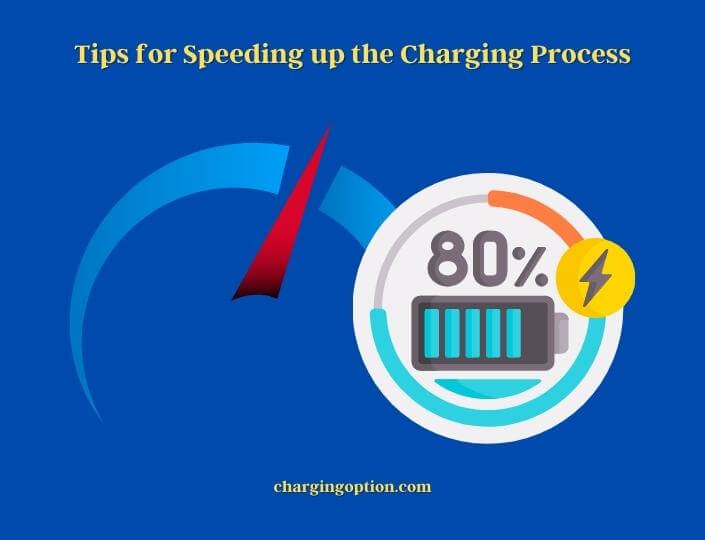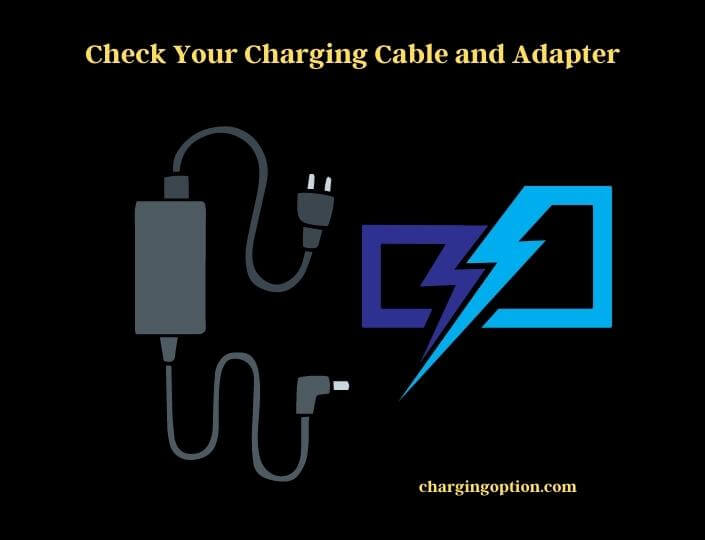In today’s world, we are more reliant on our devices than ever before. From smartphones to laptops, our devices are a crucial part of our daily lives, allowing us to stay connected, productive, and informed. One major limitation that all devices face is battery life. As our usage of these devices increases, we find ourselves charging them more frequently, often multiple times a day.

Advancements in technology have led to the development of faster charging methods, allowing us to get back to our devices in less time. But, even with these improvements, there are still things that we can do to speed up the charging process even further.
Choosing the Right Cable
Choosing the right charging cable for your device can help to ensure that it charges efficiently and safely.
Check the Device’s Port
Before purchasing a charging cable, check the port on your device to ensure that you choose a cable that is compatible with it. Different devices may have different ports, such as Lightning, USB-C, or Micro-USB.
Choose the Right Length
Consider the length of the cable you need. If you plan to use your device while it’s charging, a longer cable may be more convenient. Longer cables can also be more prone to tangling and may not charge as quickly.
Look for High-Quality Cables
High-quality charging cables are essential for ensuring that your device charges efficiently and safely. Look for cables that are made from high-quality materials, such as nylon braided or Kevlar-reinforced cables, which are more durable and less prone to fraying or breaking.
Check the Charging Speed
Different charging cables may have different charging speeds. Look for cables that are designed for fast charging if you want to charge your device quickly. Some cables may be designed for specific devices or charging standards, such as USB Power Delivery or Quick Charge.
Beware of Counterfeit Cables
Counterfeit charging cables are a common problem and can pose a safety hazard to your device and yourself. Be wary of cables that are significantly cheaper than others or that have packaging that looks suspicious. It’s best to purchase cables from reputable retailers or directly from the manufacturer.
Check Your Charging Cable and Adapter
When it comes to charging your device, the cable and adapter that you use can have a significant impact on the speed of the charging process. Using a low-quality or damaged cable or adapter can result in slow charging times or even damage your device’s battery. Here are some tips for selecting the right cable and adapter for your device:

Use the Right Cable
Make sure to use the charging cable that came with your device, as using a different cable may not be compatible with your device’s charging port. If you need to replace your cable, look for one that is certified by the manufacturer or a trusted third-party brand.
Check for Damage
Inspect your cable and adapter for any visible damage such as frayed wires, cracks, or bent prongs. Using a damaged cable or adapter can not only slow down the charging process but also pose a safety hazard.
Use a High-Wattage Adapter
Using a higher-wattage adapter can speed up the charging process significantly. For example, if your device supports fast charging, using an adapter with a higher wattage output will allow you to charge your device faster.
Switch to Airplane Mode
When charging your device, one of the simplest ways to speed up the charging process is to switch to airplane mode. This is because network connectivity, such as Wi-Fi and cellular data, consumes a significant amount of power and can slow down the charging process. Here are the steps for enabling airplane mode:
- Swipe down from the top of your device’s screen to access the quick settings menu.
- Look for the airplane mode icon, which looks like an airplane, and tap it to enable airplane mode.
- Once airplane mode is enabled, your device will no longer connect to Wi-Fi, cellular data, or Bluetooth networks, which can help to speed up the charging process.
It’s important to note that while airplane mode can help to speed up the charging process, it also disables all network connectivity. This means that you won’t be able to make calls, send texts, or access the internet until you disable airplane mode.
Turn Off Unnecessary Apps and Features
Running apps and features on your device consume power, and using them while charging can slow down the charging process.
Close Apps
When you’re not using an app, it’s a good idea to close it to prevent it from running in the background and consuming power. To close an app, swipe up from the bottom of the screen (on iOS devices) or press the recent apps button (on Android devices) and swipe the app away.
Disable Features
Some features, such as GPS, Bluetooth, and NFC, consume a significant amount of power, so it’s a good idea to disable them when you’re not using them. To disable features, go to your device’s settings and look for the relevant options.
Use Battery-Saving Mode
Most devices come with a battery-saving mode that can help to reduce power consumption and extend battery life. Enabling battery-saving mode will disable unnecessary features and apps, which can help to speed up the charging process.
Use a fast charging station
Using a fast charging station is another way to speed up the charging process of your device. These charging stations are designed to provide a higher voltage and amperage, allowing your device to charge faster than it would with a standard charger. Here are some tips for using a fast charging station:
Look for a Compatible Station
Not all devices are compatible with fast charging stations, so it’s important to check if your device supports fast charging before using one. If your device does support fast charging, look for a charging station that is compatible with your device.
Check the Power Output
Fast charging stations have different power outputs, so it’s important to choose one that provides enough power to charge your device quickly. For example, some fast charging stations provide up to 60 watts of power, while others provide up to 100 watts.
Monitor the Charging Process
While fast charging stations are designed to charge your device quickly, it’s still important to monitor the charging process to prevent overcharging, which can damage your device’s battery. Make sure to unplug your device once it’s fully charged to avoid overcharging.
Reduce the screen brightness
Your device’s screen consumes a significant amount of power, and reducing the screen brightness can help to speed up the charging process. Here are some tips for reducing screen brightness:
Use Auto-Brightness
Most devices come with a feature called auto-brightness, which automatically adjusts the screen brightness based on the ambient light in your environment. Enabling this feature can help to reduce the amount of power consumed by your device’s screen.
Manually Adjust the Brightness
If your device doesn’t have an auto-brightness feature or you prefer to manually adjust the screen brightness, you can do so by going to your device’s settings and adjusting the brightness slider.
Use a Dark Mode
Many apps and operating systems offer a dark mode, which uses a darker color scheme that can help to reduce the amount of power consumed by your device’s screen. Enabling dark mode can be particularly effective when using your device in low-light environments.
If you want to know can I charge crystals during an Eclipse? Click here for details.
Avoid using the device while charging
Using your device while it’s charging can slow down the charging process, as it consumes power and generates heat, which can cause the battery to discharge faster. Here are some tips for avoiding using your device while it’s charging:
Put your device in a cool, well-ventilated place: Charging generates heat, and placing your device in a cool, well-ventilated area can help to dissipate the heat and prevent the battery from overheating. Avoid placing your device in direct sunlight or near a heat source, as this can cause the battery to overheat.
Use a charging stand: Using a charging stand can help to keep your device in an upright position, which can improve airflow and help to dissipate heat. This can help to speed up the charging process and prevent the battery from overheating.
Wait until the device is fully charged: While it may be tempting to use your device while it’s charging, it’s best to wait until it’s fully charged before using it. This will help to prevent the battery from discharging too quickly and prolong its lifespan of the battery.
Can Speeding up the Charging Process Lead to Overcharging and Over Discharging?
When it comes to battery preservation techniques, it’s important to remember that speeding up the charging process can potentially lead to overcharging and over discharging. To avoid damaging your battery, it’s best to follow manufacturer recommendations and use a proper charging system designed for your specific device.
Conclusion
There are several tips you can follow to speed up the charging process of your device. These include checking your charging cable and adapter, switching to airplane mode, turning off unnecessary apps and features, using a fast charging station, reducing the screen brightness, and avoiding using the device while it’s charging.
If you follow these tips, you can help to reduce power consumption, dissipate heat, and prevent the battery from overheating, which can speed up the charging process and prolong the lifespan of your device’s battery. Taking care of your device’s battery can help to ensure that it performs optimally and lasts for a long time, saving you money and reducing electronic waste.
